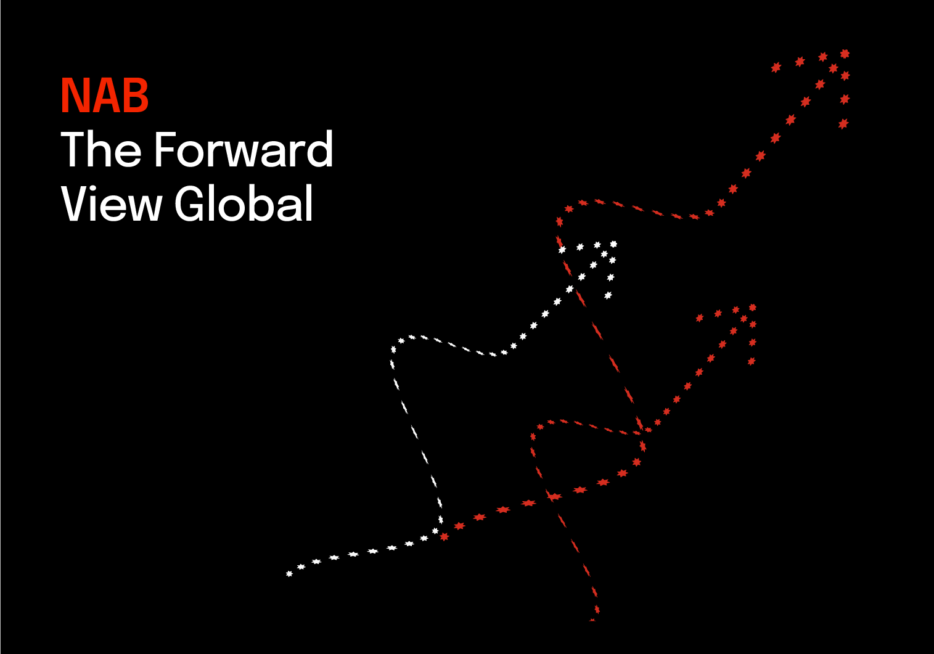Global growth headed for a H2 trough as tariffs start to bite


Insight
NAB is working with insurers to help build knowledge and resilience in the face of extreme weather events and volatility arising from climate change.

The rising cost of severe and catastrophic weather events is one of the key challenges needing investment and innovation as the world faces up to the realities of a changing climate.
To help build resilience for the future, NAB is working with insurers to layer physical risk with financial risk analytics across its lending portfolio to enable better insights for the bank.
Data from leading global professional services firm Aon shows the Asia-Pacific region in 2022 suffered $US80 billion in economic losses from catastrophes and natural disasters, with about a third of this relating to Australia.
Peter Cheesman is Aon’s Head of APAC Analytics, Reinsurance Solutions, and says the extreme weather records broken across the period highlight an urgent need to invest in climate resilience to help protect communities – especially in the more vulnerable areas.
“While there are many risks associated with climate change, the extreme weather seen in Australia and the region highlight the physical risk that is here with us today,” Cheesman says.
“Building climate resilience is a substantial task which needs action at multiple levels – from communities to business and government.
“The insurance industry is a key stakeholder here and has a role to play, including leveraging our expertise, tools and insights in mitigating climate risk to support community livelihood and the economy.”
Catastrophic impact
Aon’s 2023 Weather, Climate and Catastrophe Report notes the catastrophic flooding in Southeast Queensland and New South Wales in February and March 2022 as the largest insured loss event for Australia on record, with a reported industry loss of $A5.809 billion as of March 2023. This inundation was followed in October with more catastrophic flooding in Victoria, NSW, and Tasmania.
The “big wet” was characteristic of Australia entering its third consecutive La Niña year, the report said, culminating in Sydney’s wettest year on record since 1859. It follows the extreme droughts and bushfires exacerbated in the drier El Niño phase.
A recent industry report on affordability also shows this extreme weather linked to climate change continuing to impact insurers and communities.
The study by the Actuaries Institute, released in August, found home insurance premiums had jumped by 28 per cent this year in the biggest rise in two decades. The highest risk properties – such as those in flood-prone areas – were up by 50 per cent, the report said.
Risk framework
Cheesman says analysis of data available to the industry could help the nation make better decisions to enhance resilience – from improved planning and building processes to managing risk for financial institutions and their customers, something especially relevant with the advent of mandatory climate disclosures.
“Natural catastrophe analytics should be a fundamental component of business strategy planning, both in the short and long term,” he says. “Being able to understand the impact of future climate on business enables organisations to adapt and increase resilience to be future-ready.
“Through a more robust understanding, the insurance industry can also be better positioned to ensure there is sustainable access to required capital to support current and future business development.”
Cheesman says Aon’s climate risk framework leverages more than a decade of analytics provided to the Australian and New Zealand insurance market on quantifying the expected financial impacts of extreme weather events on a portfolio of risks.
“The most important aspect of assessing physical climate risk starts with understanding present-day exposure to weather and climate extremes,” he says. “The baseline view of risk is crucial in this process. Errors at this point only further compound the uncertainty of any future climate overlay.”
He says the projections on different time horizons and climate scenarios used to assess future climate impacts in their analytics are always science-based, in line with expert consensus, and are regularly reviewed with scientific partners.
These climate risk analytics are captured in Aon’s Combined Hazard Information Platform that allows property level risk analytics and represents a granular and widely-used extreme weather risk screening database available for Australia and New Zealand, Cheesman says.
A better picture
NAB Global Insurance Sector Lead Lyuba Tarnopolsky says the bank is using these sorts of insights to help build climate resilience by overlaying bank and insurance data with partners like Aon to have a better picture of overall risk.
“Insurers have a lot of expertise in this area and we are pleased to be learning from them as we take on the climate challenge together,” Tarnopolsky says. “This type of modelling lets us have real insight into what’s happening on the ground under a range of scenarios.”
She says it’s important to be able to measure and examine physical risk as well as transition risk at a granular level to help inform decision-making as the climate changes.
To this end, NAB has run an internal pilot to better understand physical risk in a range of catastrophe-exposed areas around Australia.
“The insights from aggregating a range of data sets help us look at both the climate risks and opportunities,” Tarnopolsky says. “The scale of the climate challenge means no single organisation can solve this alone so we are pleased to be leveraging our relationship with insurers to help enable better-informed decisions for the bank.”
Supporting energy efficiency
Separately, NAB is also working with insurance partner QBE to offer a 5 per cent rate reduction on the cost of Lenders Mortgage Insurance (LMI) for eligible customers on homes that meet energy efficiency and sustainability criteria1.
The property must meet the lender’s requirements as well as minimum criteria of at least a NatHERS 7-star rating or a Green Building Council of Australia Green Star rating, and have a loan to value ratio above 80 per cent. As well as the LMI discount benefit, customers can also receive lower lending rates through NAB on qualifying homes that meet energy efficient criteria.
The benefit aims to encourage and increase affordability of energy efficient home ownership in Australia and is available to customers purchasing or refinancing new or existing homes, or seeking construction loans.
At time of launch, Pat Priest, General Manager, LMI at QBE Australia Pacific, said that increasing home energy efficiency is one of the most effective ways for consumers to reduce their emissions and the benefit was designed to support customers who are committed to, or may be considering making the switch to, more energy efficient housing.
“We know that making properties sustainable is not only good for the environment, but also adds value to homes, so we’re proud to be enabling new and existing homeowners to look after both their present, and their future,” Priest said.
“An energy efficient home uses 66 per cent less electricity, 51 per cent less water and produces 62 per cent fewer greenhouse gas emissions2. With Australia’s residential sector producing 15 per cent of the nation’s total greenhouse gas emissions3, this can not only offer huge benefits to the environment, but to consumers, who stand to save on energy costs by making these changes.”
1 Home buyers to benefit from NAB’s energy efficient incentive – NAB News
2 The Value of Green Star Key Findings
3 Source: Department of Climate Change, Energy, the Environment and Water

Climate change is a significant risk to the planet and a major challenge for society to address. At the same time, opportunities are emerging as the transition to net zero occurs.
NAB is supporting customers to decarbonise, build their climate resilience and help achieve the goals of the Paris Agreement.
© National Australia Bank Limited. ABN 12 004 044 937 AFSL and Australian Credit Licence 230686.